It’s TOYHEM!

—
Welcome to TOYHEM! For the sixth straight holiday season, we’re bringing you a series of features and columns celebrating the toys of our youth, which often made for the best memories this time of year. Click here to check out the complete index of stories — and have a Merry Christmas, a Happy Chanukah and Happy Holidays! — Dan
—
By PETER BOSCH
Board games are always fun, but those that have attracted me most are those based on TV shows. What’s truly amazing is just how many there have been, especially between the 1950s and 1970s.
So dig these 13 GROOVY TV BOARD GAMES:
—
I Dream of Jeannie (Milton Bradley, 1965). Ah, Barbara Eden. Everyone’s favorite genie. And the artwork on the box lid and the game board are nice coquettish images of Jeannie. In the game, a player starts with seven “magic discs” and must move with the dice from the start at the bottom of the board to cover all the letters in “JEANNIE” at the top. But along the way, if the player lands on one of the red rows near the top, another player can use Jeannie to send them back to the start.
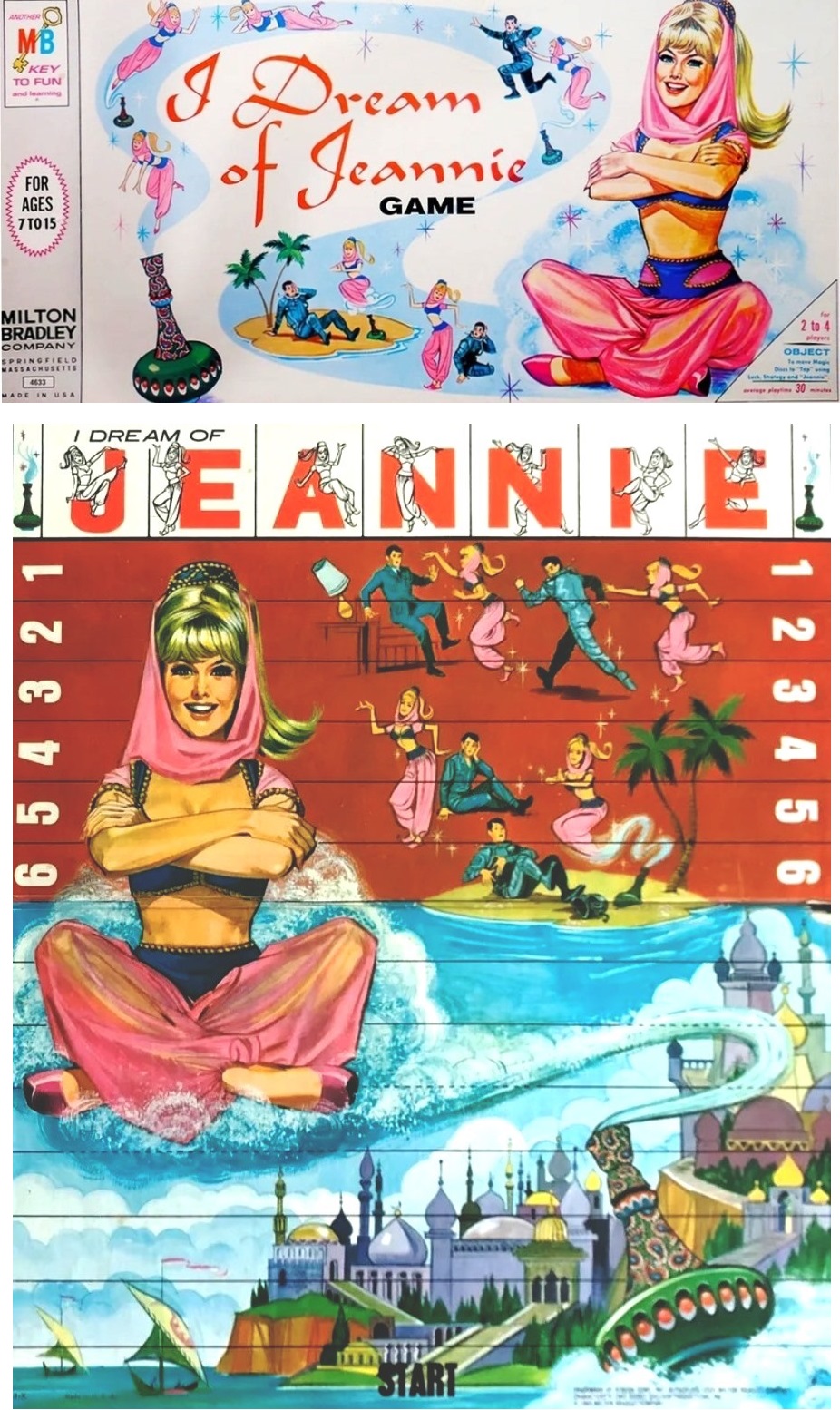
—
F Troop (Ideal, 1965). The box lid features Forrest Tucker, Ken Berry, and Larry Storch and certainly brings back memories of the high-scale buffoonery that went on at Fort Courage. The objective of the game is to be the trooper who recovers the most stolen loot from the outlaw.

—
Walt Disney’s Zorro (Whitman, 1959). “This bold renegade carves a Z with his blade. A Z that stands for Zorro.” What kid did not want to be Zorro? With this Z-shaped game board, they get a chance to be the masked rider of old California. The player who gets the cards that spell out Z O R R O and returns to the hideout first is the winner.

—
The Partridge Family (Milton Bradley, 1971). Come on, get happy! Having just finished a concert, the family/players (one of four characters: Mom, Keith, Laurie, and Danny) rush to get to their touring bus. The first to get there is the winner. Shirley Jones, David Cassidy, and the cast are pictured on the game box and the board.
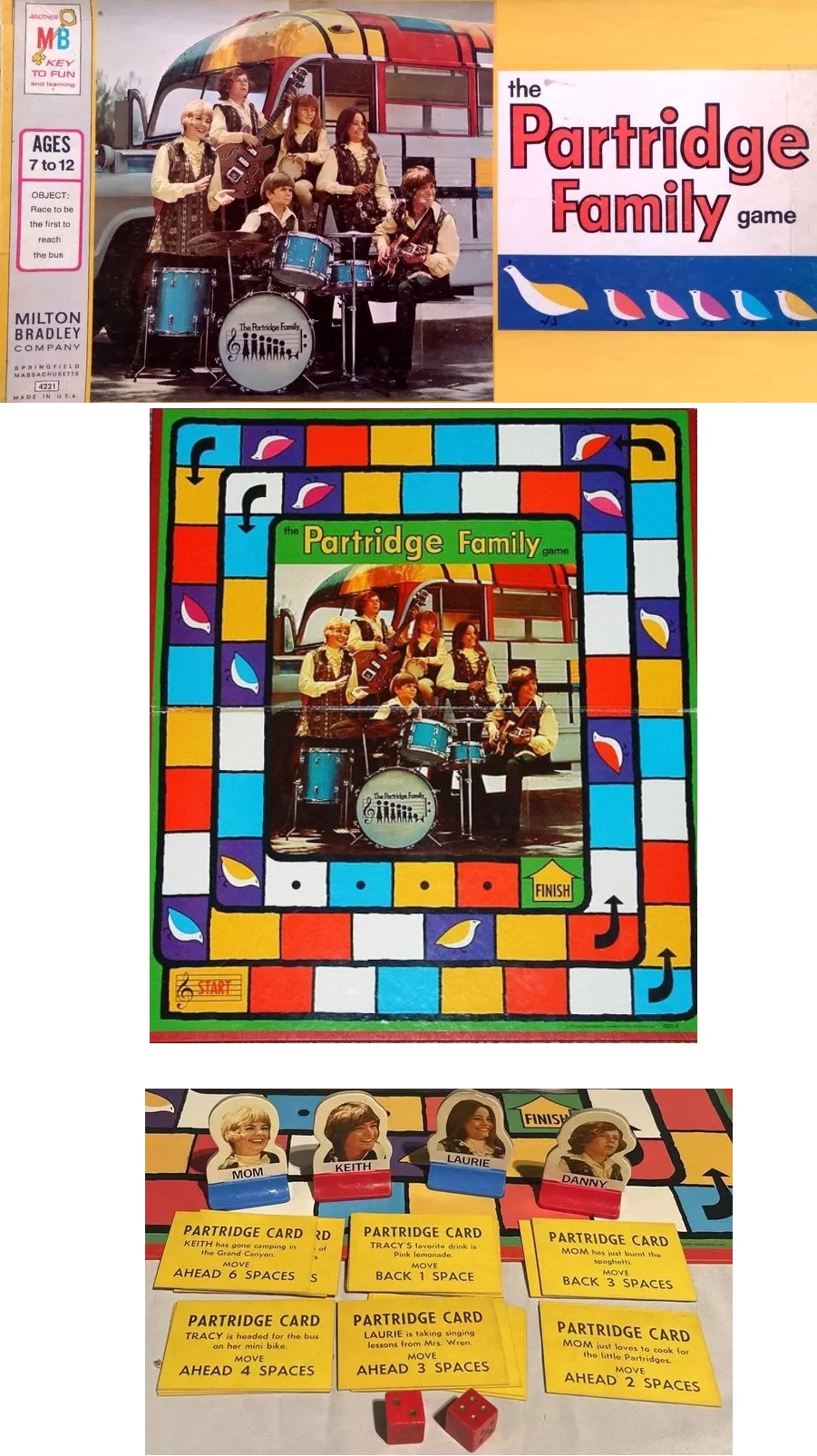
—
77 Sunset Strip (Lowell, 1959). “You’ll meet the highbrow and the hipster, the starlet and the phony tipster. You’ll see most every kind of gal and guy, including a private eye.” A TV success, the parking lot attendant played by Edd “Kookie” Byrnes outdistanced stars Efrem Zimbalist Jr. and Roger Smith in popularity with young female viewers. In the board game, players play detective to solve a murder in a motel. After getting cards with the time, the weapon, and motive, the first player to correctly solve it is the winner. No Kookie comb included.
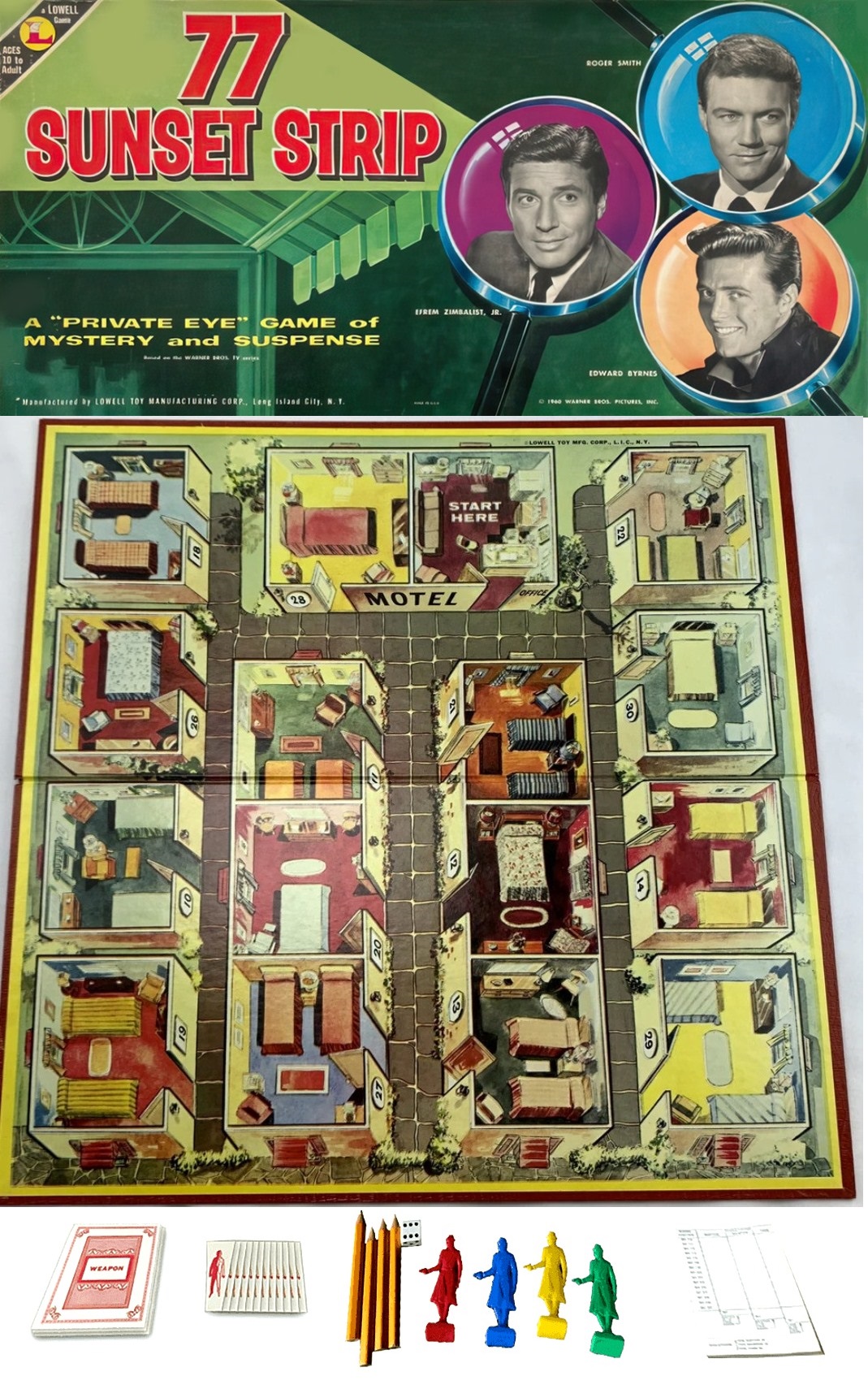
—
Lost in Space (Milton Bradley, 1965). Danger, Will Robinson! In this game, a spinner dictates what direction a player can move on the board — including landing in the cyclops’ pit if you are unlucky (if you do, you have to return to the start). To win, a player has to be the first to traverse the board and land their marker on the finish circle.
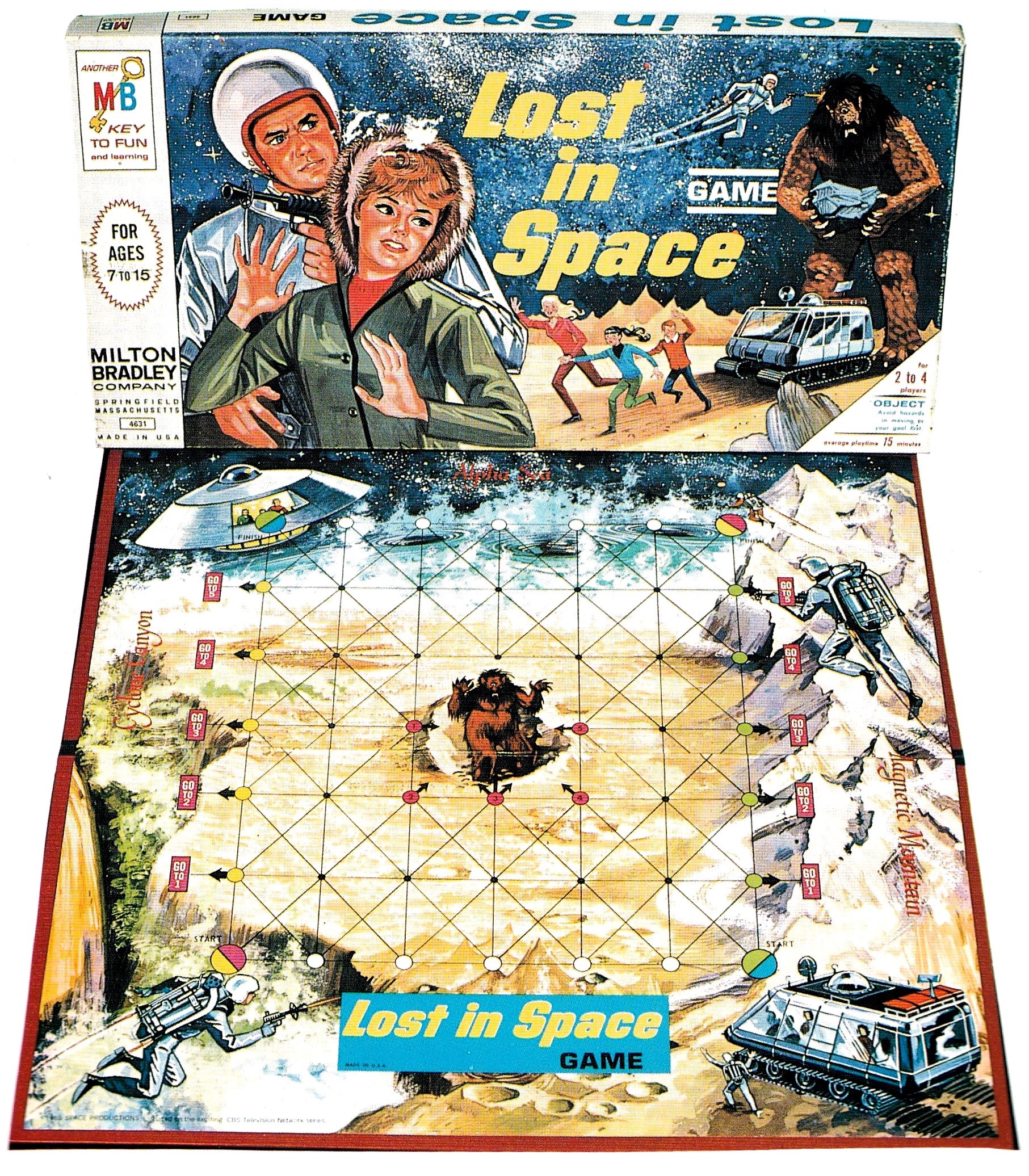
—
Bat Masterson (Lowell, 1958). “Now in the legend of the West, one name stands out of all the rest. The man who had the fastest gun. His name was Bat, Bat Masterson.” The lyrics to the TV show starring Gene Barry as real-life lawman Bat Masterson was a nice, gentle melody. The game board tries to carry over the feel of the Old West by adding buildings (a jail, a bank, a general store, etc.) on the game board, giving it a three-dimensional look. In the game play, players are deputies who are looking to capture the head of a group of outlaws.
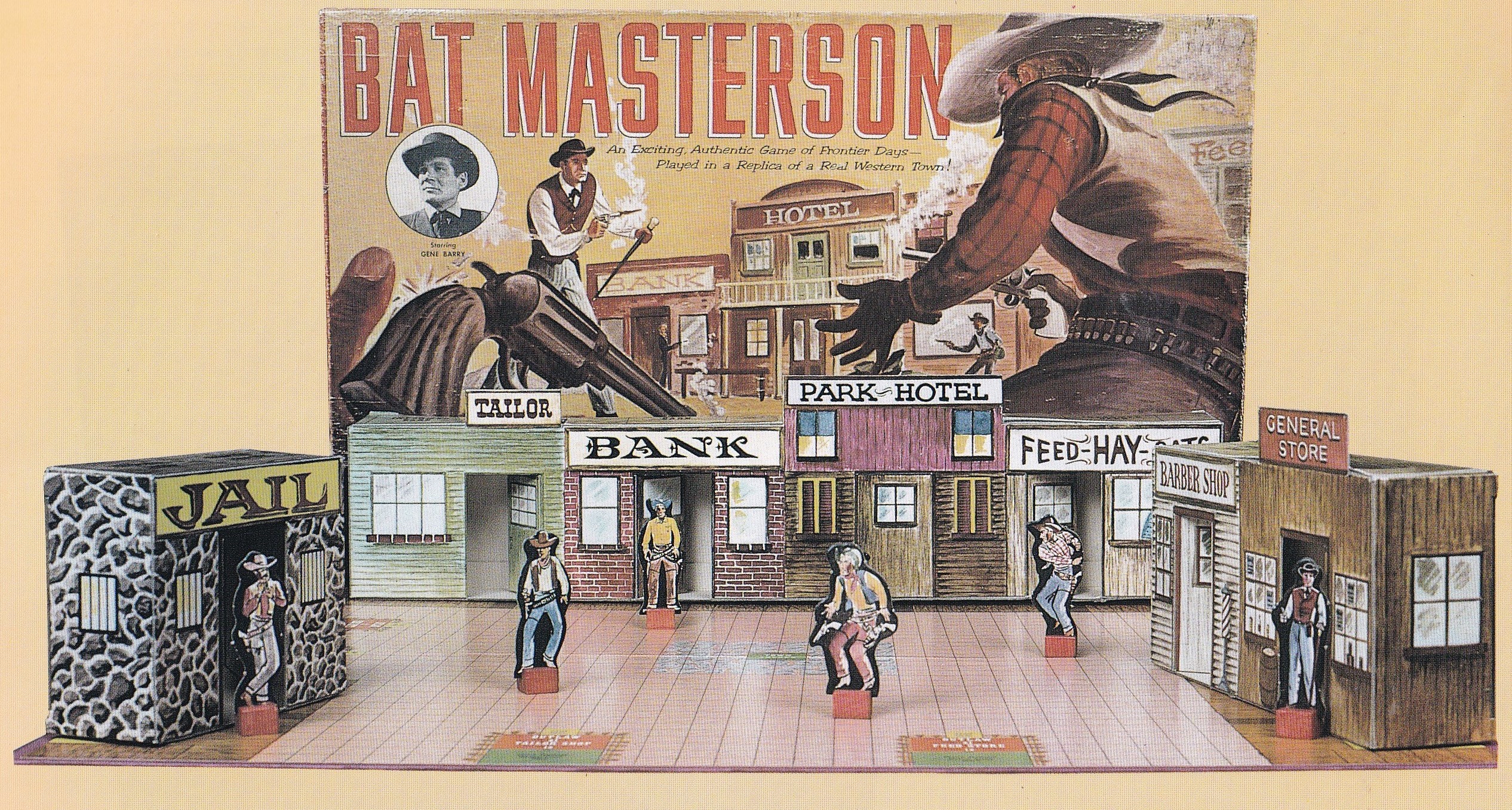
—
The Man from U.N.C.L.E. (Ideal, 1965). There were actually several different board games based on the hit TV spy series starring Robert Vaughn as Napoleon Solo. In this one, your assignment as an agent of U.N.C.L.E. is to locate the THRUSH chief card and return with it to HQ, ASAP. But be careful, enemy agents are everywhere and looking to make sure you are D.O.A.
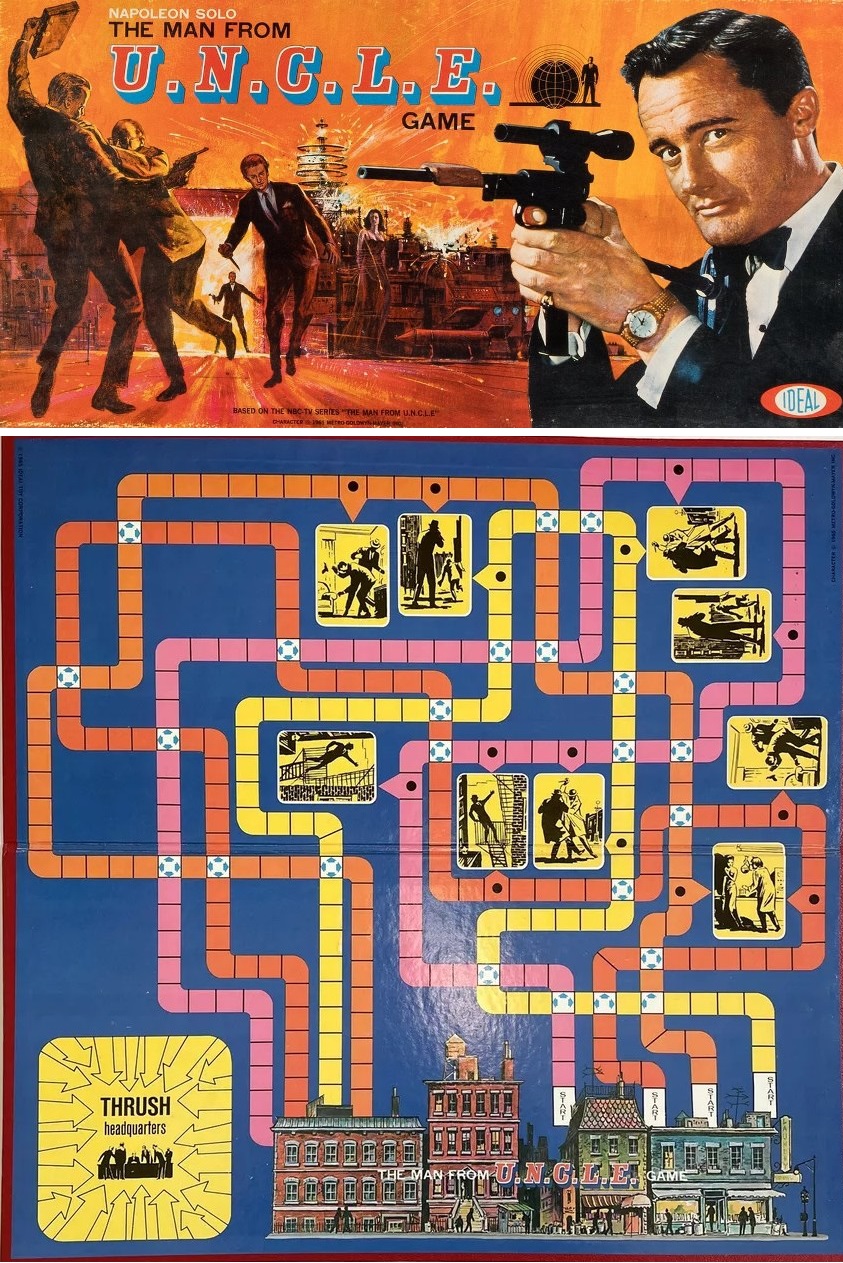
—
The Green Hornet Quick Switch Game (Milton Bradley, 1967). Another case for the Green Hornet! The lid has photos of Van Williams and Bruce Lee. The board itself is colorful-looking, with a number of artist-rendered action scenes. The objective for a player is to collect the three chips of their color — representing a gas gun, mask, and the Hornet Sting — then return to their home circle. However, there is an option for a quick switch with another player.
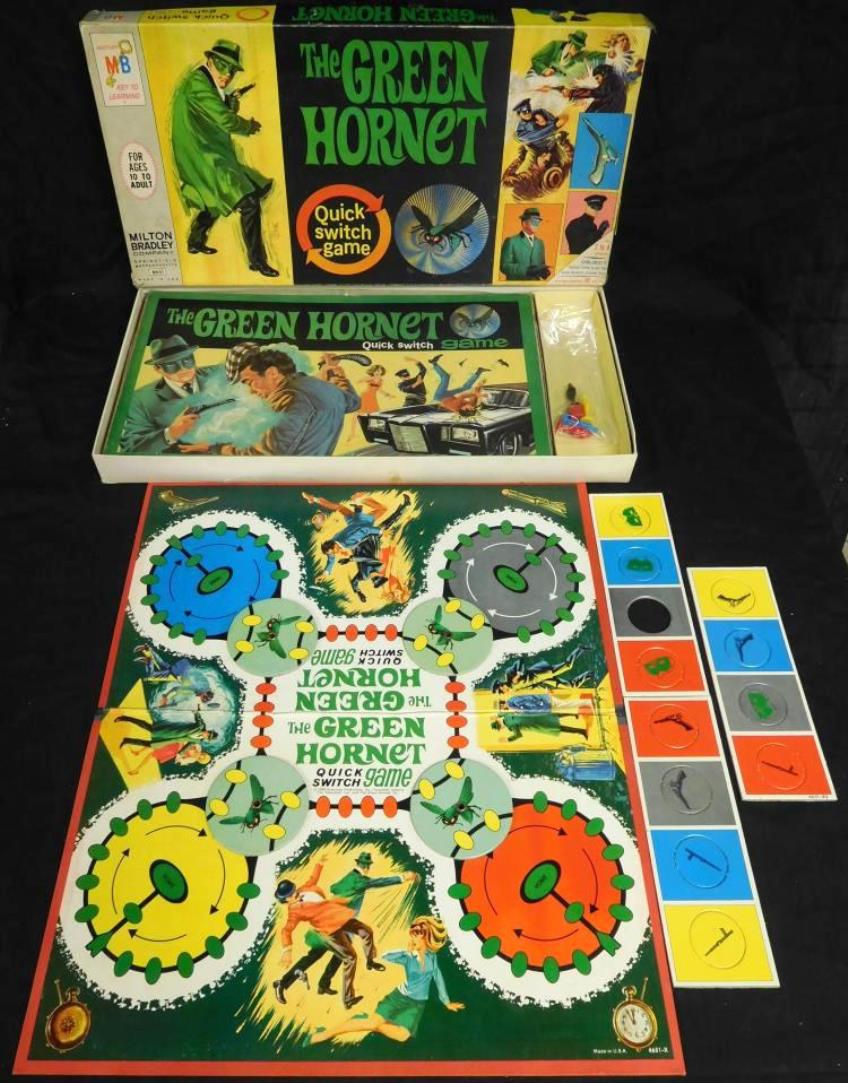
—
Star Trek (Ideal, 1967). Board games, the final frontier. The goal of the Star Trek game is to visit three planets and return to Earth. Complicating this, though, is that the ship must refuel constantly, otherwise you will drift in space.
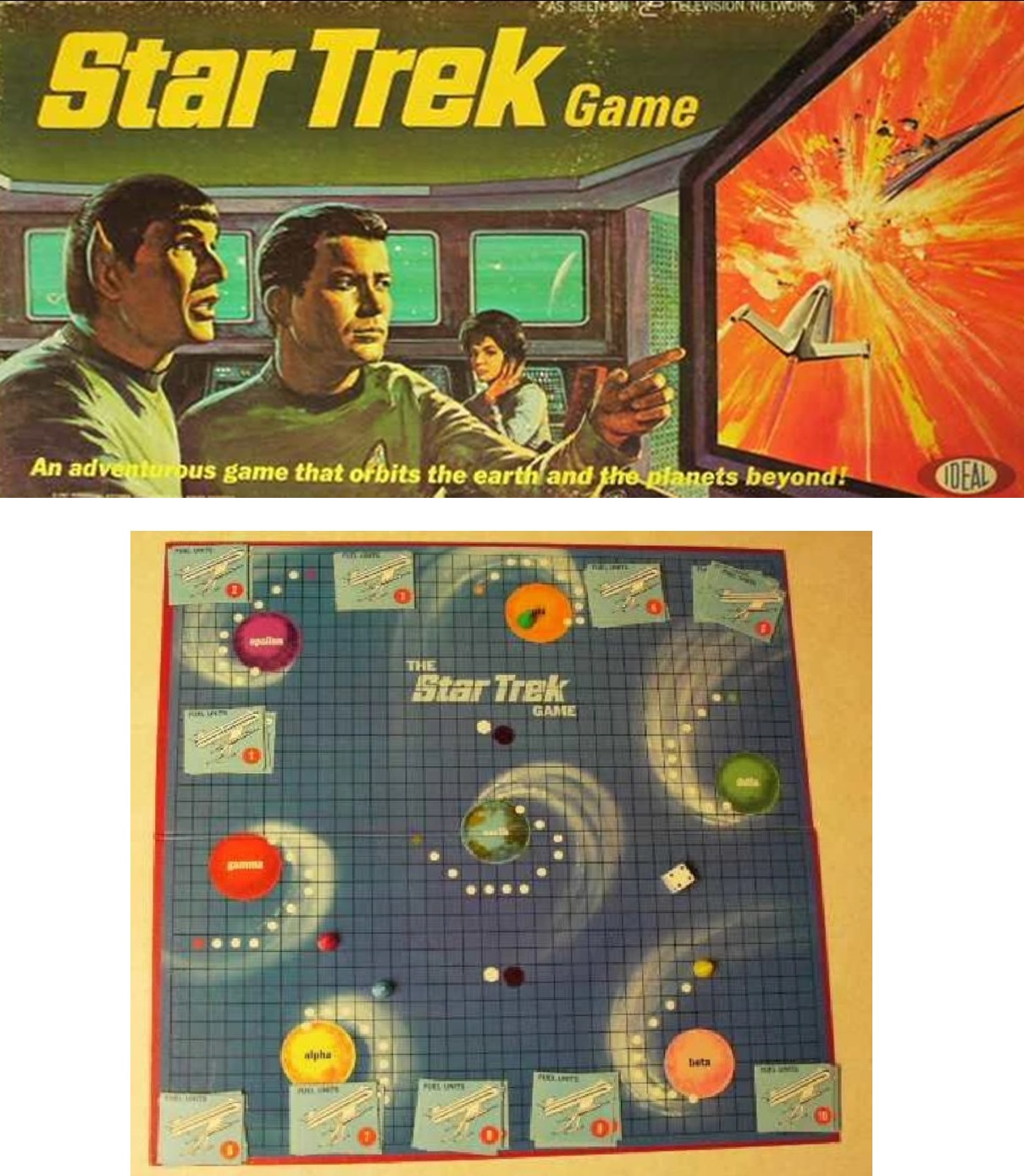
—
The Fugitive (Ideal, 1964). Richard Kimble (David Janssen) ran off the TV screen and onto the board game, with the objective being the same as the series: catch the one-armed man who murdered his wife (the game’s instruction eliminates that last piece of information). Players accumulate four cards of the same color showing parts of a one-armed character.
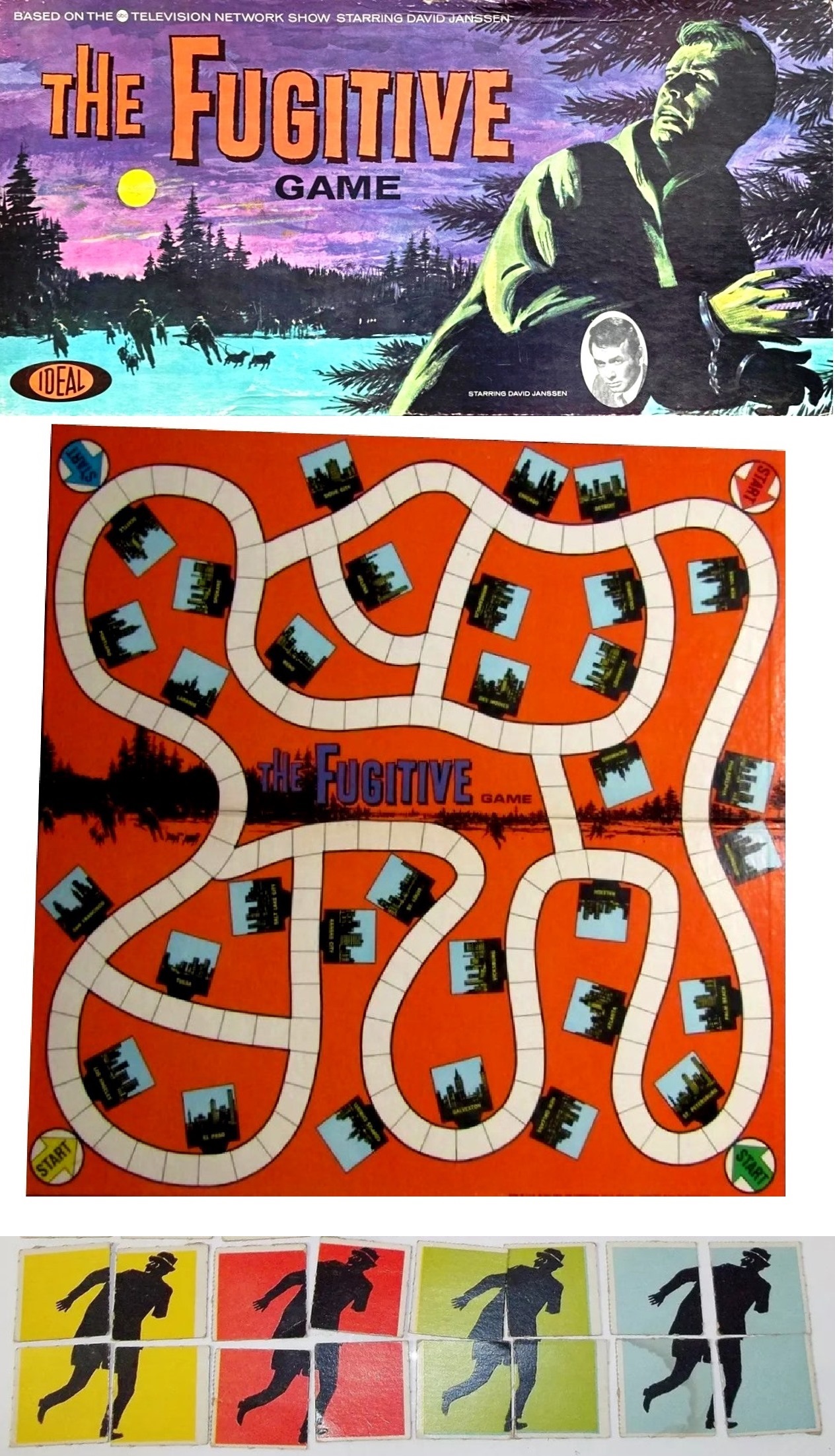
—
12 O’Clock High (Ideal, 1965). On the TV series 12 O’Clock High, Robert Lansing was the general in charge of the air crews, but the producers kissed him off by having his character Frank Savage killed. Actor Paul Burke took over the responsibility of command in the second season, which proved a mistake because ratings dropped. For Ideal, which had already issued the game with Lansing’s picture on the box lid, it meant a quick redo with a photo of Burke.
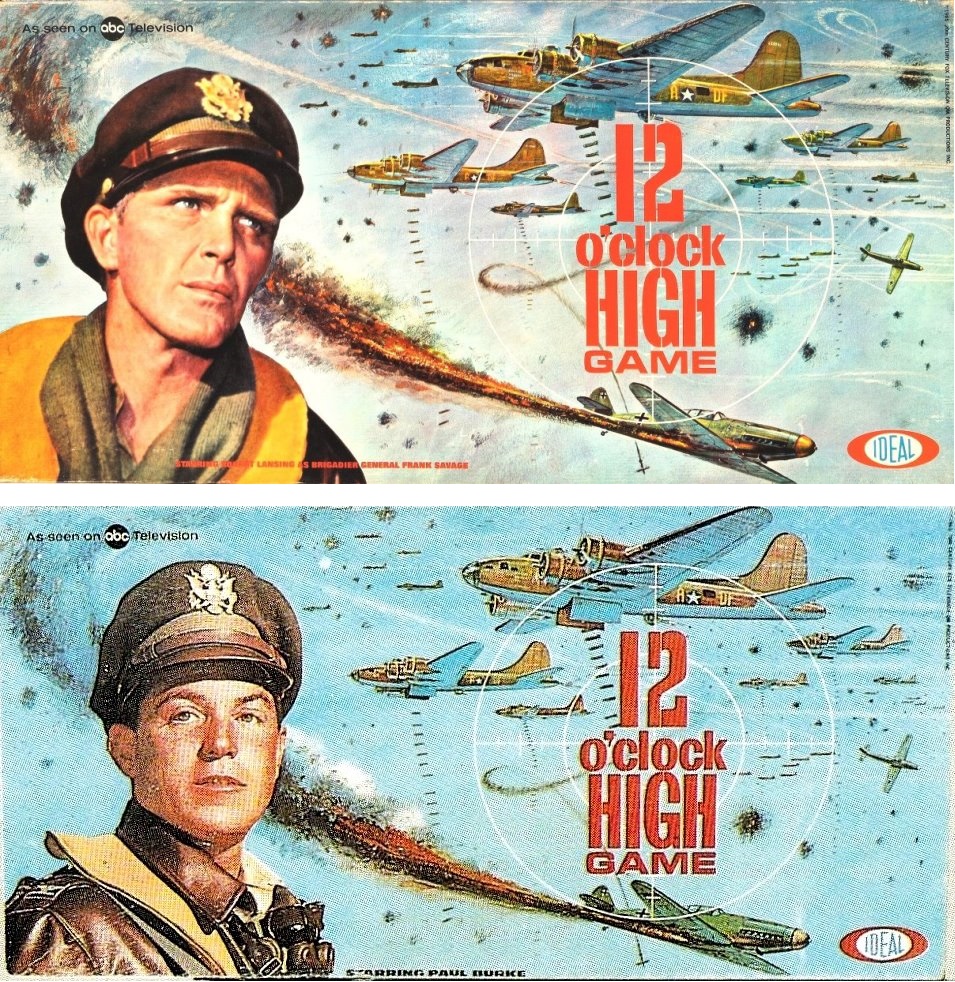
—
The Munsters Masquerade Party Game (Hasbro, 1965). Between 1964 and 1965, The Munsters had at least four different games based on the series. In this one, it’s a dice roll-and-move game, but if a player lands on “Pick a Party Card,” they must be willing to perform if they wish to continue along the board. If they don’t follow the card’s instruction to sing a song or do some other party-like activity, they lose three turns.
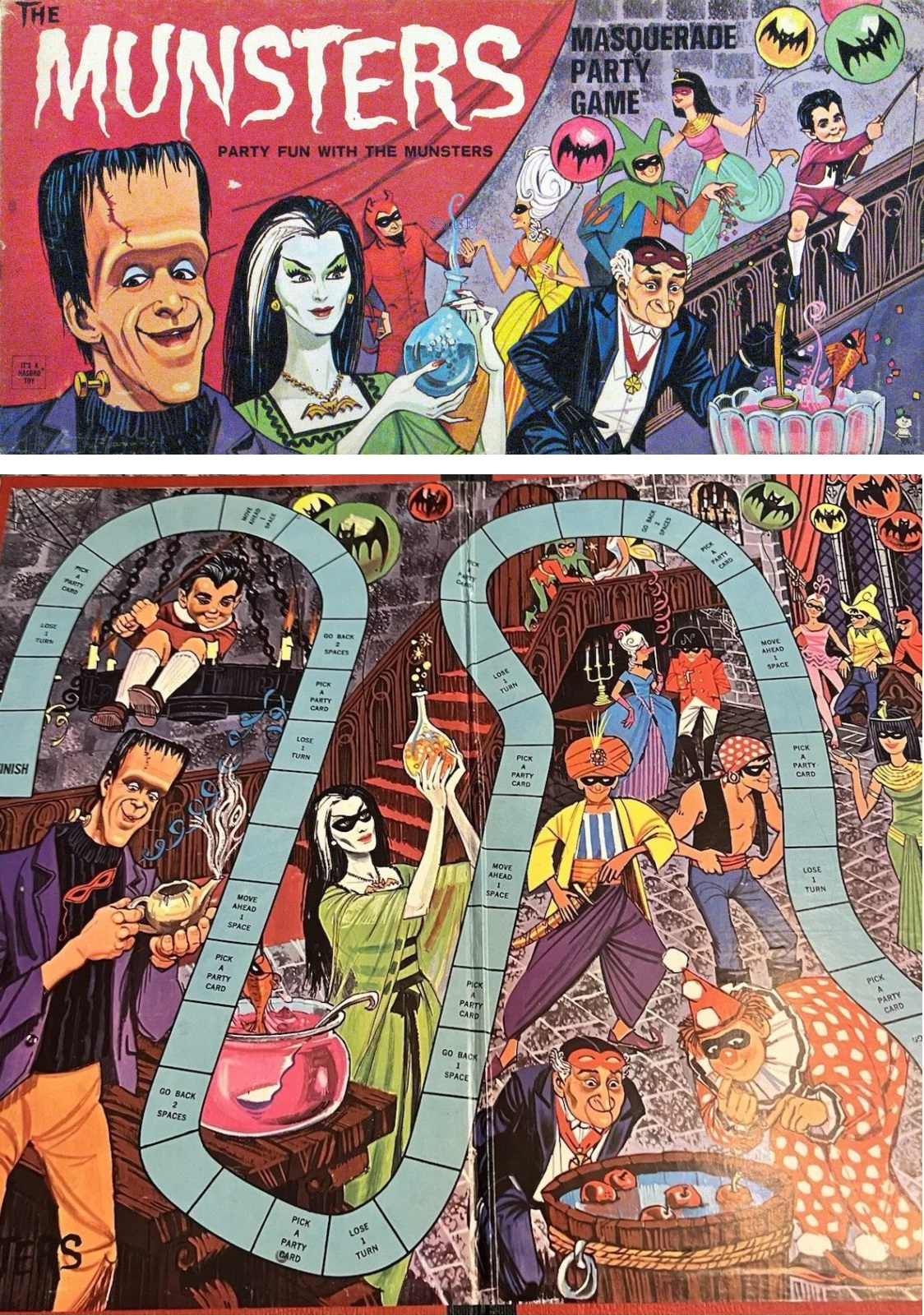
—
So get to playing! Meanwhile, I recommend the book Spin Again, by Rick Polizzi and Fred Schaefer, a great pictorial history of board games of every kind.
—
MORE
— The Complete TOYHEM INDEX of Stories and Features. Click here.
— Dig These 13 Stupendous SUPERHERO BOARD GAMES. Click here.
—
13th Dimension contributor-at-large PETER BOSCH’s first book, American TV Comic Books: 1940s-1980s – From the Small Screen to the Printed Page, was published by TwoMorrows. A sequel, about movie comics, is coming in 2025. Peter has written articles and conducted celebrity interviews for various magazines and newspapers. He lives in Hollywood.
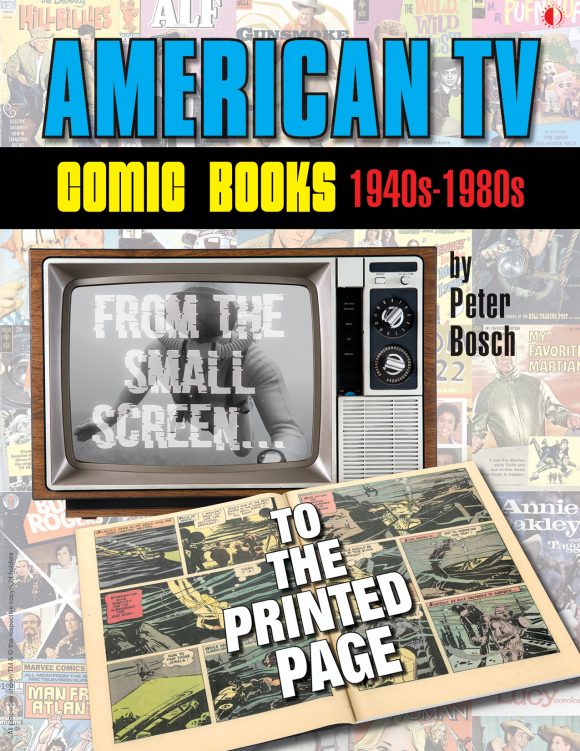

November 30, 2024
I hope Barbara Eden has a copy of that game somewhere!
November 30, 2024
I think my parents were holding out on me (gift wise) during the 1960s. These are awesome. The Fugitive?! Who knew?
November 30, 2024
I don’t think I had any of these board games, but I know I had some others, like “Bewitched” and “Dark Shadows”. Also FYI it’s Edd “Kookie” Byrnes (not Barnes).
November 30, 2024
Typo. Thanks.
November 30, 2024
Yes, absolutely a typo. Thanks for fixing it. In repentance, I will now subject myself to 12 hours of Byrnes and Connie Stevens singing, “Kookie, Kookie, Lend Me Your Comb.”
December 1, 2024
Ha!
December 1, 2024
The artwork for those TV board games was fabulous…the boxes make terrific display pieces. In my home office, I have the “Barnabas Collins” and “Time Tunnel” displayed…they look great.
December 2, 2024
While some of the game boards are disappointingly dull, I have to give kudos to the creativity in some. You could also play with the figures and buildings in the Bat Masterson game. The 77 Sunset Strip game sounds a bit like Clue. Edd Byrnes is probably best known these days as Vince Fontaine, host of the TV dance show in “Grease.”
March 23, 2025
I have the Star Trek game and also the Six Million Dollar man game. Pretty cool games!